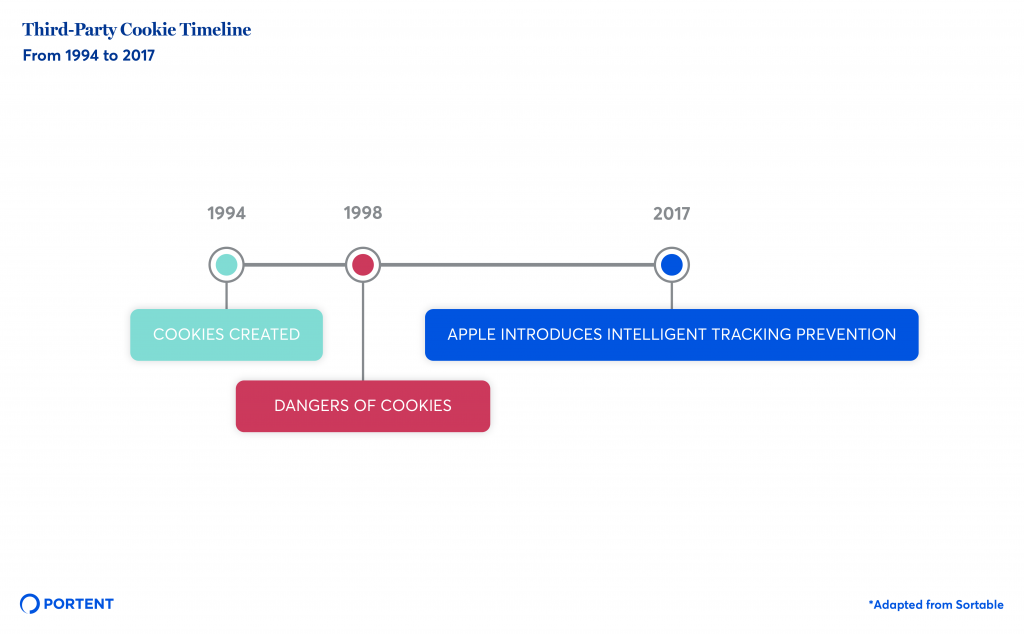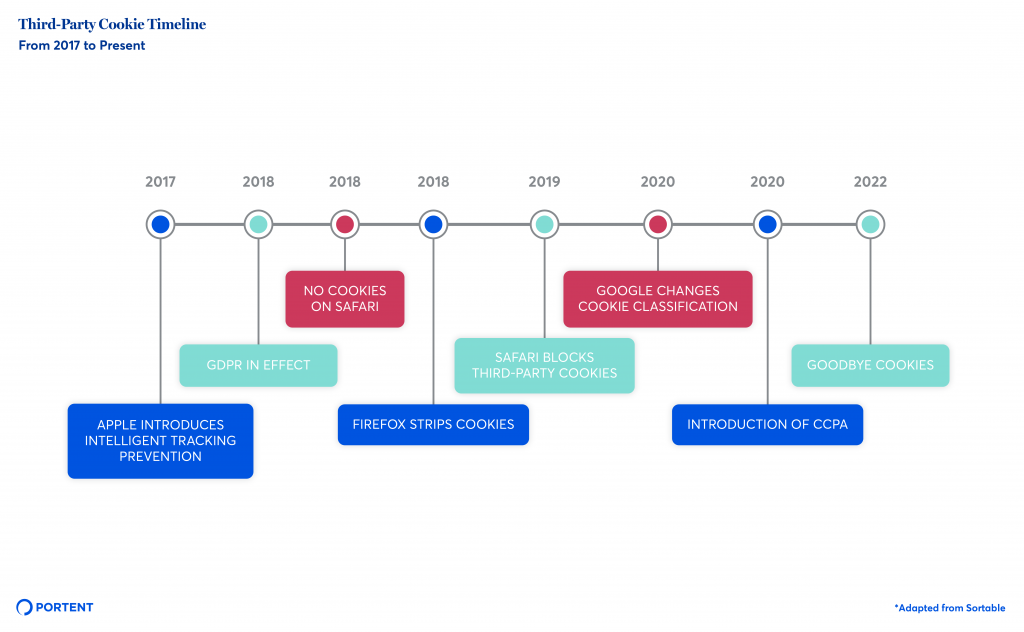As online privacy concerns continue to grow, the way advertisers target users online will change as well. A business utilizing programmatic advertising to improve its audience targeting will have its campaigns impacted by upcoming improvements to the user’s data privacy. These improvements are coming in the form of legislation and updates to internet browser policies, primarily limiting the use of third-party cookies to gain insights into user behavior. In this post, I’ll talk about some things brands can do to prepare for these updates, but first, let’s dive into the history of third-party cookies in programmatic advertising.
History of Third-Party Cookie Targeting
Since the dawn of programmatic, advertisers could track and remarket to users that landed on their website. This targeting tactic is possible due to the third-party cookies, a code placed on a website to track user behavior and show ads to them across other websites. Until recently, the user could not opt-out of this targeting tactic and was at the mercy of the advertiser’s frequency capping cookie windows. While these ads may feel intrusive, the benefit is that they target what the user is interested in rather than showing an ad with no connection to their search intent. Regardless, with recent legislation, the user has the right to provide consent to this kind of tracking.

Data Privacy Updates
Starting in 2018, government agencies implemented laws that impacted digital advertising. These laws are designed to protect the consumer and set the stage for better legislation later down the road.
GDPR
In 2018, the European Union wrote legislation to protect its citizens called the General Data Protection Regulation (GDPR). This legislation regulates how a business can track and use PII (Personally Identifiable Information) from any EU citizen that visits a website. In a nutshell, the website must ask for consent before collecting any PII data. Not complying with this regulation can result in hefty fines.
CCPA
The first significant government regulation in the United States came from California in 2020. The California Consumer Privacy Act (CCPA) allows California consumers to know how their data is used and gives the consumer the right to opt out of data collection altogether. The main difference between the CCPA and the GDPR is that the CCPA allows you to opt out while the GDPR enables the consumer to opt in.
Browser Privacy
Along with the legislation, in the private sector, internet browsers started making changes of their own to improve user privacy, starting with Safari in 2017. Following Safari’s browser blocking tracking cookies, Firefox implemented its ban in 2018. In 2020, Google Chrome announced they would phase out third-party cookies by 2022.

What Will Replace Third-Party Cookies?
While ad tech companies and browsers are still working through all the details on the future of tracking, there are some things we know. For instance, first-party data will help to replace the third-party data advertisers leveraged for many years. First-party data is data you collect directly from your website visitors and customers. This data is typically where the website visitor or customer opt-in to tracking, emails, and more.
Google announced a replacement to third-party cookie tracking with FLoC (Federated Learning of Cohorts). This concept is a form of interest-based targeting that considers first-party and contextual information, general information about interests from the user who will see the ad, and previous actions that the user has taken. Google groups these users into cohorts made up of thousands of people to maintain privacy and effectively target the advertiser’s audience. In short, Google is providing a replacement for advertisers to reach their target audience while improving privacy to the user.
Tips for Current and Future Programmatic Campaigns
It’s crucial to plan for 2022 now with your programmatic campaigns, so your business is ready for the changes that are inevitably coming. Below are some tips to consider for current and future programmatic campaigns:
Current Campaigns:
- Continue to utilize third-party tracking tools and tactics
- Allocate more media spend to first-party and contextual campaigns, so those tactics are in place when third-party tracking disappears
- Ask your agency or ad-buying platform what their game plan is once cookies disappear
Future Campaigns:
- Leverage contextual targeting for prospecting and remarketing campaigns
- Monitor your first-party data collection to utilize in future campaigns
- Work with your agency or ad-buying platform and create alternative targeting tactics to current campaigns heavily impacted by cookie tracking
In Summary
The digital advertising landscape is ever-changing. With government regulation and browser updates, targeting the right audience is more complex than ever before. However, by leveraging current programmatic campaign tactics, implementing new first-party tactics, and working with your agency or ad-buying platform, your business will continue to drive conversions and see success with programmatic advertising.










An informative blog post, written in simple language!